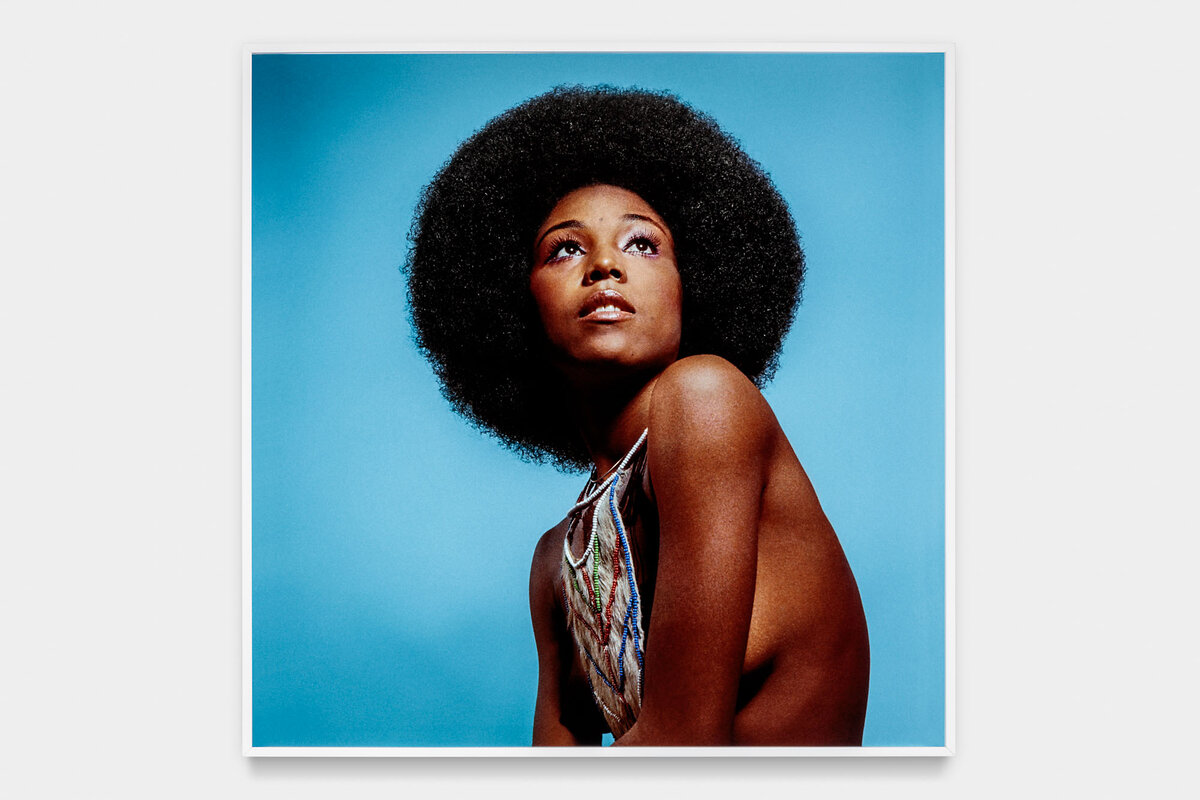A visit to ‘Giants’ offers reflections on Black art – and lives
Loading...
| New York
“Digging in the crates” is a phrase in hip-hop culture that describes how DJs would peruse music shops in the pursuit of rare vinyl records. It is a particularly fitting term when thinking of the “Giants” art exhibition at the Brooklyn Museum in New York, which is a carefully curated selection of items from super couple Alicia Keys and Kasseem “Swizz Beatz” Dean.
Mr. Dean and his wife, the iconic singer, are no mere celebrities, though. They are teenage prodigies who turned their modest New York upbringings into music that would change the world. That is part of what makes this exhibit interesting – the fact that two music impresarios would propagate art beyond their own musical talents.
And while they are hip-hop giants, they also want to celebrate the everyday lives of Black folk, whether it relates to acts of social justice, or simply socializing between friends.
Why We Wrote This
A story focused onOur cultural commentator tours a power couple’s art collection at the Brooklyn Museum to see what effect the exhibit, “Giants,” has on the understanding of Black art and everyday life.
“We want people to see themselves. We want people to feel inspired,” Ms. Keys says in a video interview with the museum. “We want you to feel connected, and emotional, and really discover. We want you to see the giants of whose shoulders we stand.”
“That’s why the title ‘Giants’ is so important, because the artists are giant, the people are giants, and the works that they’re going to see are giant,” Mr. Dean adds in the video.
The exhibit, in and of itself, is awe-inspiring and sprawling. The early portion is flowery, whether the paintings incorporate flora, or warm photos of the Deans. At the heart of the collection, there is the work of a man who chronicled both Black resistance and revelry – Gordon Parks. It was he who said “you know, the camera is not meant just to show misery.” There’s a picture of a husband and wife on a Sunday morning in Detroit, an untitled picture of the sprawling 1963 March on Washington, a powerful picture of Malcolm X at a rally. It is a fitting tribute to a self-taught renaissance man – the first Black staff photographer at Life magazine – who took pictures of fashion, and of the civil rights movement.
In places, the exhibit, featuring 98 works, is striking in terms of how abstract it is. Strike is the name of a shimmering sculpture crafted by Hank Willis Thomas in 2018. A nearby placard states that Mr. Thomas’ work spotlights the impact of mass criminalization on Black communities in this country, but that doesn’t do this particular model justice.
The visual of a hand blocking a forward-moving police baton is soul-stirring and revolutionary. The stainless steel piece with mirrored finish gives it a graying akin to civil rights photos, with a sense of modernism that makes such an image so timeless.
For some, the exhibit is cluttered. A New York Times review by Will Heinrich applauded the poignancy of the pieces, but questioned whether “the same point couldn’t have been made in a less aesthetically claustrophobic way” and “left more room for the subtlety, the depth and the sheer complexity possible in visual art.”
Kimberli Gant, curator of modern and contemporary art at the museum, suggested in an interview that the presentation of such strong ideals isn’t as neat and tidy as we might like them to be.
“Within art history, there still tends to be narratives that are focused in kind of Eurocentric histories. Most museums are really grappling with the fact that that has very much infused how they’ve collected over generations – if not centuries,” Dr. Gant noted.
“They’re going about trying to shift that,” she adds in the interview, through the exhibitions they are presenting and the artworks they are acquiring “to really show that the world is much more complex. It’s much messier.”
That complexity can also be seen among patrons.
Cassandra Jones and Doni Nicole, a pair of coworkers from Westchester County, New York, decided to make the hour-long journey to New York City to attend the exhibit. Accompanying them are a trio of young people, Kyle and Zion, Ms. Jones’ sons, and Eiliyah, Ms. Nicole’s daughter.
“My oldest is 10 and I just wanted him to be exposed to some art,” Ms. Jones says. “I think this is his first time in an art gallery, so I’m explaining what a few of the pictures and displays are.”
“Art is important,” she adds. “And it’s important to be exposed to other different types of art besides music.”
The pursuit of versatility in art not only inspired Ms. Nicole and her daughter, but that variation exists in their household. Ms. Nicole is a singer and Eiliyah is an artist.
“I wanted [my daughter] to come and just experience art in so many different categories. ... She’s really, really good,” Ms. Nicole says. “I’m huge fans of [Dean and Keys], and to hear they have an art exhibit, I thought it was dope.”
A few yards away from the joyous quintet, a more serious conversation is taking place between a couple of women who are also native New Yorkers.
”We’re at a crossroads. Our younger generations are at a threat of extinction if they don’t understand the backdrop to why African American artists, for centuries, have conveyed these messages,” offers Charisse Tyus. “Coming here and being a part of these kinds of exhibits, supporting these events is making sure that [these messages] continue and that our young people have a chance to come and have some critical thinking.
“They’re taking [our history] out of the school system,” Ms. Tyus continues. “What are we to do as mothers? What are we to do for our children? How are we going to re-engage them, pull them back in the fold so that they can embrace for themselves as well as for their children and their children’s children?”
Michelle Taylor, Ms. Tyus’ colleague, praises the approach to the exhibit.
“We were looking at all the photos, all the artists’ work, it brought back joy and sadness together. ... We’ve come so far, but we have so much further to go,” Ms. Taylor says. “Alicia, from the onset, was conscious of what’s happening and what’s going on, and she’s always been that way, so this exhibit is no surprise.”









